Spring crankin’ and jerkin’
Top tactics for prespawn bass; best timing for cranking walleyes
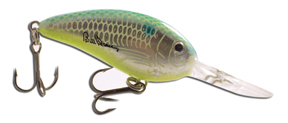
Any bass fisherman worth his salt knows the time to catch numbers of quality bass improves during the prespawn period. However, anglers must choose the best baits and actions to coax feeding bass into biting in still-frigid waters.
FLW Tour pro Randall Hutson of Washburn, Mo., has reeled in more than $456,000 worth of bass on tour fishing for prespawn bass with his trusty jerkbait. Opting more often than not for a 4-inch Smithwick Rogue, Hutson knows where to look for bass and what action they like when the water is still on the chilly side.
“I like an erratic retrieve,” Hutson said. “Generally I will jerk it twice and then stop it for a second, and then maybe jerk it once or twice more and repeat.”
 This stop-and-go action tends to work well for fish that aren’t otherwise willing to chase fast-moving baits. Extending the pause will sometimes generate strikes when the standard cadence doesn’t
This stop-and-go action tends to work well for fish that aren’t otherwise willing to chase fast-moving baits. Extending the pause will sometimes generate strikes when the standard cadence doesn’t
produce.
“The bass will usually hit the bait just as you start to move it again after a long pause,” Hutson said.
Hutson likes to start by targeting points and channel swing banks. A channel swing bank is that area of shoreline where a bluff ends and becomes a flatter or more gently sloping bank as the channel that created the bluff swings back toward the main lake. Anglers study maps and meander around, seeking productive areas, but fishing experience ultimately determines where the bass are staging and feeding.
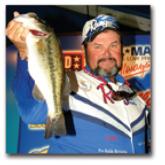 “I like to start with the third or fourth point or channel swing from the back of a creek,” Hutson said. He positions his boat so that he can make multiple casts in 5 to 8 feet of water. Most shallow and suspending jerkbaits will run about 4 feet deep. Hutson maximizes his efficiency by keeping the bait in a range that the fish can see and react to effortlessly. “Most of the time you’re going to get bit up on the shallow part of your cast,” Hutson said.
“I like to start with the third or fourth point or channel swing from the back of a creek,” Hutson said. He positions his boat so that he can make multiple casts in 5 to 8 feet of water. Most shallow and suspending jerkbaits will run about 4 feet deep. Hutson maximizes his efficiency by keeping the bait in a range that the fish can see and react to effortlessly. “Most of the time you’re going to get bit up on the shallow part of your cast,” Hutson said.
Hutson finds the jerkbait bite starts when the water temperature climbs to 48 degrees. He feels, however, that the best bite occurs in water from 52 to 55 degrees. While not all parts of the lake will be the same temperature in early spring, most northern banks will heat up earlier because of warmer southern winds and direct sunlight. This can be especially true if you have a few warm days together in late winter or early spring.
Hutson likes to fish jerkbaits on a 7-foot medium-light-action Shimano rod with a Shimano reel spooled with 10-pound monofilament line. He feels that a softer rod pulls the bait in a more lifelike manner, not to mention that a softer rod tip aids in landing quality bass hung on otherwise tiny hooks. The give in the rod tip coupled with the stretch of 10-pound line requires practice to ensure good hooksets. Most of the time a solid sweep set works well.
These days, Hutson does not modify his jerkbaits. “They suspend really well right out of the package,” Hutson said. He would rather they sink slightly as opposed to floating up. Not long ago, he would spend hours getting his baits to sink and suspend correctly by sticking strips of lead to the bait, but now he feels manufacturers do a good job getting the baits to “sit right” in the water.
 While most anglers regard a jerkbait as the finesse approach to prespawn fish, anglers generally deem crankbaiting to be the power approach. Last year at the Wal-Mart Open on Beaver Lake, FLW Tour pro Russ Moran of Murfreesboro, Tenn., put on a clinic for catching prespawn bass in tough fishing conditions. On the first day of competition, Moran brought 17 pounds, 8 ounces to the scales with a limit of bass that included two fish over 5 pounds. He coaxed those prespawn bass into biting a crankbait.
While most anglers regard a jerkbait as the finesse approach to prespawn fish, anglers generally deem crankbaiting to be the power approach. Last year at the Wal-Mart Open on Beaver Lake, FLW Tour pro Russ Moran of Murfreesboro, Tenn., put on a clinic for catching prespawn bass in tough fishing conditions. On the first day of competition, Moran brought 17 pounds, 8 ounces to the scales with a limit of bass that included two fish over 5 pounds. He coaxed those prespawn bass into biting a crankbait.
Moran fishes a variety of medium-diving crankbaits for prespawn bass and finds that the colder the water, the tighter the wiggle needs to be on the bait. “A Rapala Shad Rap used to be the best coldwater crankbait,” Moran said. However, he said that now a lot of the flat-sided crankbaits on the market produce well when fishing for prespawn bass. In fact, he even employs homemade crankbaits on occasion if they have the right wiggle.
“I’m still a student of crankbait fishing, and I feel like I learn something new every time I’m on the water,” Moran said. Being a student of the game does not mean he has not settled on some favorite colors. For prespawn bass, he likes to stick with shad patterns like Tennessee shad for clear water and colors like chartreuse Alabama shad for murkier waters.
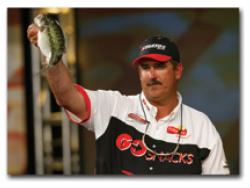 Points and 45-degree sloping banks with chunk rock mark the areas Moran likes to target initially in early spring. “I like to stand on the trolling motor and just fish down parallel to the 45-degree banks until I come to a point,” Moran said. Once he gets to the point, he’ll back off the trolling motor and make multiple casts from multiple directions across and down the point. He especially likes points that have a saddle or hump on the end of them.
Points and 45-degree sloping banks with chunk rock mark the areas Moran likes to target initially in early spring. “I like to stand on the trolling motor and just fish down parallel to the 45-degree banks until I come to a point,” Moran said. Once he gets to the point, he’ll back off the trolling motor and make multiple casts from multiple directions across and down the point. He especially likes points that have a saddle or hump on the end of them.
“In that Beaver tournament I found a point that extended way out, had a saddle and then came back up a few feet before dropping off into the channel,” Moran said. He believes that small little nuance helped him land bass that other competitors missed. He suggests that finding something little like that can tip the scales in your favor.
According to Moran, the crankbait season kicks off when the water temperature reaches 50 degrees. Below 50 degrees, the bite can be really tough, but if the water temperature jumps up a few degrees in a couple of days, the fish will get active and feed. He feels like 55 degrees is the ideal crankbait temperature but also thinks he can load the boat after a warming trend in cold water.
 While Moran credits himself as being a flipper and pitcher of sorts, he’s found a new success and love for early spring crankbait fishing. He lets the water clarity and mood of the fish dictate his tackle, and he’s had success fishing crankbaits on heavy line with bait-casting equipment as well as with light line on spinning equipment.
While Moran credits himself as being a flipper and pitcher of sorts, he’s found a new success and love for early spring crankbait fishing. He lets the water clarity and mood of the fish dictate his tackle, and he’s had success fishing crankbaits on heavy line with bait-casting equipment as well as with light line on spinning equipment.
Moran acknowledges that not all crankbaits are made alike. He has waded through hundreds of baits, only keeping a select few for fishing when it counts. When the money is on the line, Moran will tie on his best crankbait and just go fishing. As he proved on Beaver last year, it can be those subtle little differences that take you from zero to hero.
Right time for cranking walleyes
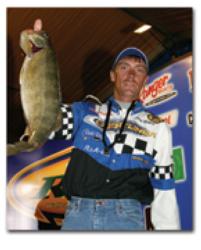 Fishing for walleyes in early spring differs in many ways from fishing for bass, but one aspect remains constant between the two – crankbaits and jerkbaits will catch big fish in early spring. In fact, according to Wal-Mart RCL Walleye Tour pro Rick Walter of Casper, Wyo., the majority of the big walleyes you catch will be on crankbaits and jerkbaits.
Fishing for walleyes in early spring differs in many ways from fishing for bass, but one aspect remains constant between the two – crankbaits and jerkbaits will catch big fish in early spring. In fact, according to Wal-Mart RCL Walleye Tour pro Rick Walter of Casper, Wyo., the majority of the big walleyes you catch will be on crankbaits and jerkbaits.
“They’re just big-fish baits,” Walter said. “You might not catch a lot of fish, but the ones you do catch will be the right kind of fish.”
Walter, who blew away the rest of the field last June on Devils Lake with his crankbaiting prowess, keeps this style of his fishing simple. Forage dictates what he throws and where he fishes. In fact, he sometimes ties on an oversized bait and fishes it rapidly through a shallow area, looking to scare up baitfish.
“I don’t care what an area looks like,” he said. “I only want to see signs of baitfish.”
He prefers a slow-wobbling bait in the early spring when the water temperatures climb to 50 degrees and above. He generally opts for Rapala Husky Jerks and Tail Dancers as well as Cotton Cordell Wally Divers. His tackle remains simple as well, consisting of limber 7-foot rods matched with large-capacity spinning reels for maximized casting distance.
“Some of the baits we throw are really light, and we may want to cover a large area that is slowly tapering,” Walter said.
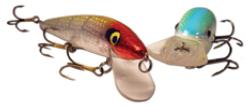 Walter targets walleyes in the 1- to 5-foot range this time of year. “I’m usually looking for moving water, if I can find it, on reservoirs and slack-water eddies on river systems,” Walter said. Wherever the walleyes roam this time of year, he feels confident he can catch them shallow on crankbaits and jerkbaits because they are up there to fill up on forage.
Walter targets walleyes in the 1- to 5-foot range this time of year. “I’m usually looking for moving water, if I can find it, on reservoirs and slack-water eddies on river systems,” Walter said. Wherever the walleyes roam this time of year, he feels confident he can catch them shallow on crankbaits and jerkbaits because they are up there to fill up on forage.
Sometimes it can mean a lot of “chunking and winding,” but when you find that one special area, it will make all the hard work worth the effort.